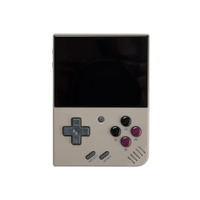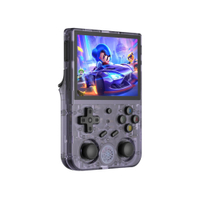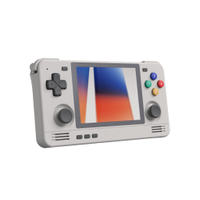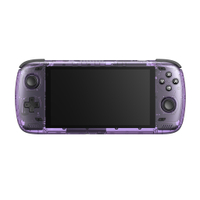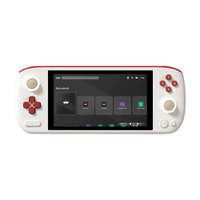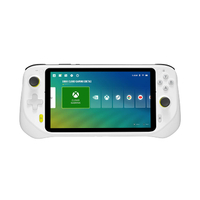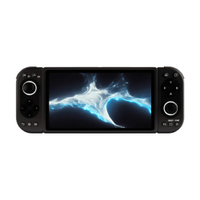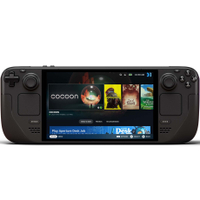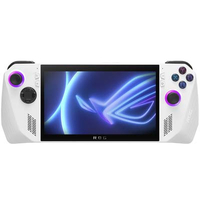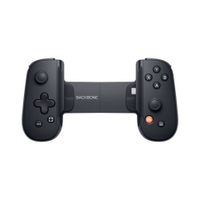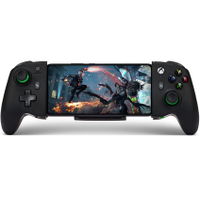These are the Black Friday gaming handheld deals that I'm buying
You don't need to sit huddled in front of the TV anymore.

1. Quick links
2. Starter gaming handhelds
3. Gaming handhelds under $350
4. More powerful gaming handhelds
5. Phone controllers
Now, unlike some of our compadres over at Windows Central, I'm not a hardcore gamer by any means. But do enjoy sitting back and playing some of the bigger titles released throughout the year.
Even while there are the Starfields, Baldur's Gate 3s, and Diablo 4s of the world, I'm constantly drawn to trying to play "old" retro games. This has been something I've dabbled with ever since getting the Galaxy Z Fold 2 and continues today with the help of dedicated gaming handhelds. Frankly, there has never been a better time to jump into the world of retro gaming than now.
As is the case with everything in the world of tech, there are options to be had at pretty much every price point. Thanks to some early Black Friday deals, you can save a boatload of cash, which can then be used to buy presents for others even more gaming handhelds. We'll kick things off with a few recommendations for under $100, giving you an idea of where you could (and probably should) start.
Quick Links
- Micro Center 64GB microSD cards (5-pack):
$31.99$19.99 at Amazon - Miyoo Mini Plus:
$79.99$63.99 at Amazon - Anbernic RG35XX: $75.99 $60.79 at Amazon
- Powkiddy X55:
$134.99$107.99 at Amazon - GameSir X2 Pro Controller:
$79.99$63.99 at Amazon
Starter gaming handhelds
Miyoo Mini Plus: $79.99 $63.99 at Amazon
Ever since it was released, this has been one of my favorite handhelds to use. It's an upgraded version of the Miyoo Mini from back in 2021, featuring a 3.5-inch IPS display, and even features built-in Wi-Fi. Some of the other features you'll find include a 3,000mAh battery, offering over seven hours of battery life, and dual microSD card slots.
One of these is for the operating system, while the other can be loaded up with your favorite retro games. Speaking of which, the Mini Plus is capable of playing games from the NES all the way up to the PS1, without breaking much of a sweat.
Something else that I love about these retro gaming handhelds is the community support. The software that ships out of the box with the Miyoo Mini Plus leaves a bit to be desired. But, thanks to the fact that it's actually running a modified version of Linux, called Onion OS which implements features such as an activity tracker, community-made themes, and more.
Anbernic RG353V: $139.99 $111.18 at Amazon
This was actually the second (we'll talk about the first later) handheld that I purchased, but was the first that didn't have other use cases. It looks like a Game Boy, with the added benefit of microSD card support, dual thumb sticks, Bluetooth, Wi-FI, and a gorgeous screen. And there's another trick up the sleeve of the RG353V, as it actually runs dual operating systems.
With the press and hold of a button, you can switch between the custom Linux software and Android. Not that you needed it, but this highlights the benefit of these kinds of devices, as you won't need to just reach for your phone if you want to fire up Call of Duty Mobile or Dead Cells.
Gaming handhelds under $350
Retroid Pocket 2S: $159 $149 w/ on-page coupon at Amazon
If you've ever been remotely interested in the world of gaming handhelds, then there's a good chance that you've heard about Retroid. The Retroid Pocket kind of put the company on the map, and since then, we've seen different versions released, with the Pocket 2S being one of the more recent launches.
Instead of relying on a vertical handheld to play your favorite retro games, the Pocket 2S takes a more modern approach with its Game Boy Advance-like design. Retroid also didn't hold back when it comes to what the Pocket 2S has to offer. You'll find Hall Effect sticks, which rely on magnets and conductors, along with being contactless, so you won't have to worry about the dreaded "stick drift."
Unlike the handhelds from Anbernic and Miyoo, this one runs Android 11 out of the box, giving you access to all of your favorite games from the Play Store. This also has the added benefit of being able to use something like Daijisho as a front-end, after you get all of your emulators and ROMs set up.
AYN Odin 2: $339 $299 at AYN
Those who want the most powerful Android-powered gaming handheld are going to want to check out the AYN Odin 2. AYN has primarily focused on offering different Windows gaming handhelds, with a sprinkling of devices like the Odin Pro.
But, the AYN Odin 2 isn't like others, as it's powered by the same chip found in many of the best Android phones of 2023. Instead of relying on obscure processors, the Odin 2 uses a Snapdragon 8 Gen 2 and is currently on sale for less than $300.
Not only is this incredibly powerful, but the Odin 2 also runs Android 13, while sporting Wi-Fi 7 and a 6-inch display. Plus, it has an 8,000mAh battery, and will easily last for most of the day, if not a couple of days.
The only "catch" is that the Odin 2 is still in its pre-order phase. However, the company is shipping more units every week, so you'll be able to get it in time for Christmas.
Ayaneo Pocket AIR: $319 $299 at AYANEO
Moving further up the chain, we have the Ayaneo Pocket Air which is more akin to what you might expect when you hear the phrase "gaming handheld." However, this one takes full advantage of the world of Android, while being powered by MediaTek's Dimensity 1200. There are a few different configurations available, ranging from 6GB of RAM to 12GB of RAM, but all of them provide a microSD card slot.
Getting everything set up and ready to go is no different than what you would do on any other Android phone. The only difference being is that you have buttons, triggers, and joysticks to control the interface, along with the touchscreen. We're currently still putting this through its paces, but as a bit of a spoiler, I've fallen in love with it.
Logitech G Cloud: $349.99 $299.99 at Amazon
Logitech's G Cloud is one of the more underrated gaming handhelds on the market. It has largely been overshadowed by the likes of the Steam Deck and even the Razer Edge, mainly due to its price.
Admittedly, it's not the most powerful handheld in this price bracket, but it can still hold its own. If there's one thing that the G Cloud does have going for it, it's that the ergonomics are simply incredible.
It also shouldn't come as much of a surprise that this is running Android, meaning that you'll be able to download any of your favorite games from the Play Store. Plus, the G Cloud is easily one of the best handhelds if you want to play Xbox Cloud Gaming, GeForce Now, or Steam Link.
Price check: $299.99 at Best Buy
Pimax Portal: $369 $339 at Pimax
Earlier this year, the Pimax Portal was announced, which not only is an Android gaming handheld, but offers quite a bit of extra functionality. For one, the controllers are detachable, just like the Nintendo Switch and Lenovo Legion Go, but there are also a total of five cameras on the back.
This is because the Pimax Portal will eventually be able to double as a VR headset. While the Portal is available now, the VR headset has seemingly been delayed until early next year. It's also powered by the Qualcomm XR2 chip, which is the same processor that was found in the Meta Quest 2.
Recognizing that the gaming handheld market was heating up, Pimax has since released the Portal Retro, which ditches all of the cameras. You also won't be able to detach the controllers, but if you consider this to be like the Switch Lite, it's not really a big deal.
More powerful gaming handhelds
You probably knew this section was coming, but there's a whole world of gaming handhelds besides the ones we've talked about. And, there's definitely an argument to be made about whether the Steam Deck really helped launch this entire category. We aren't going to dive too deep here, but it's worth mentioning a couple of options. However, if you're interested in trying to figure out which portable gaming handhelds you should buy, we recommend checking out this excellent comparison from our friends over at Windows Central.
Steam Deck: LCD - $349 | OLED $399
Arguably, Valve opened the floodgates with the announcement of the original Steam Deck. It's been almost two years since Valve released its handheld, and just recently, the company announced a new model with an OLED display.
Instead of relying on Windows, which frankly sucks on handheld devices, SteamOS is at the helm. This is a modified version of Linux, which includes a compatibility layer so that traditional Steam games can be played on the Steam Deck. This is the same layer that has helped Google and Valve bring Steam to Chromebooks.
The Steam Deck isn't the most powerful handheld on the market, but especially following the OLED refresh, it arguably remains the best. Games are constantly being updated to support the Steam Deck, but this beast of a gaming handheld can run many of your favorite emulators.
ASUS ROG Ally (Z1 Extreme)- $699.99 $599.99 at Best Buy
Rounding out the pack is the ASUS ROG Ally. Released in 2023, this was the first Windows handheld to be powered by the AMD Ryzen Z1 Extreme. Since then, the Lenovo Legion Go has been released, relying on the same chipset, but the Ally still might be the better handheld.
The 7-inch, 120Hz OLED display might be enough of a reason to pick the Ally over the Legion Go and Steam Deck. It's also still light enough so you can game for hours without your arms getting tired.
There is, however, one thing to keep in mind if you are considering the ROG Ally. It seems that there is something going on that causes the microSD card slot to stop functioning, and will effectively "break" the card that you're using. ASUS is aware of the problem but has yet to issue a fix, so until then, we recommend just sticking with the built-in SSD.
Why not just use your phone?
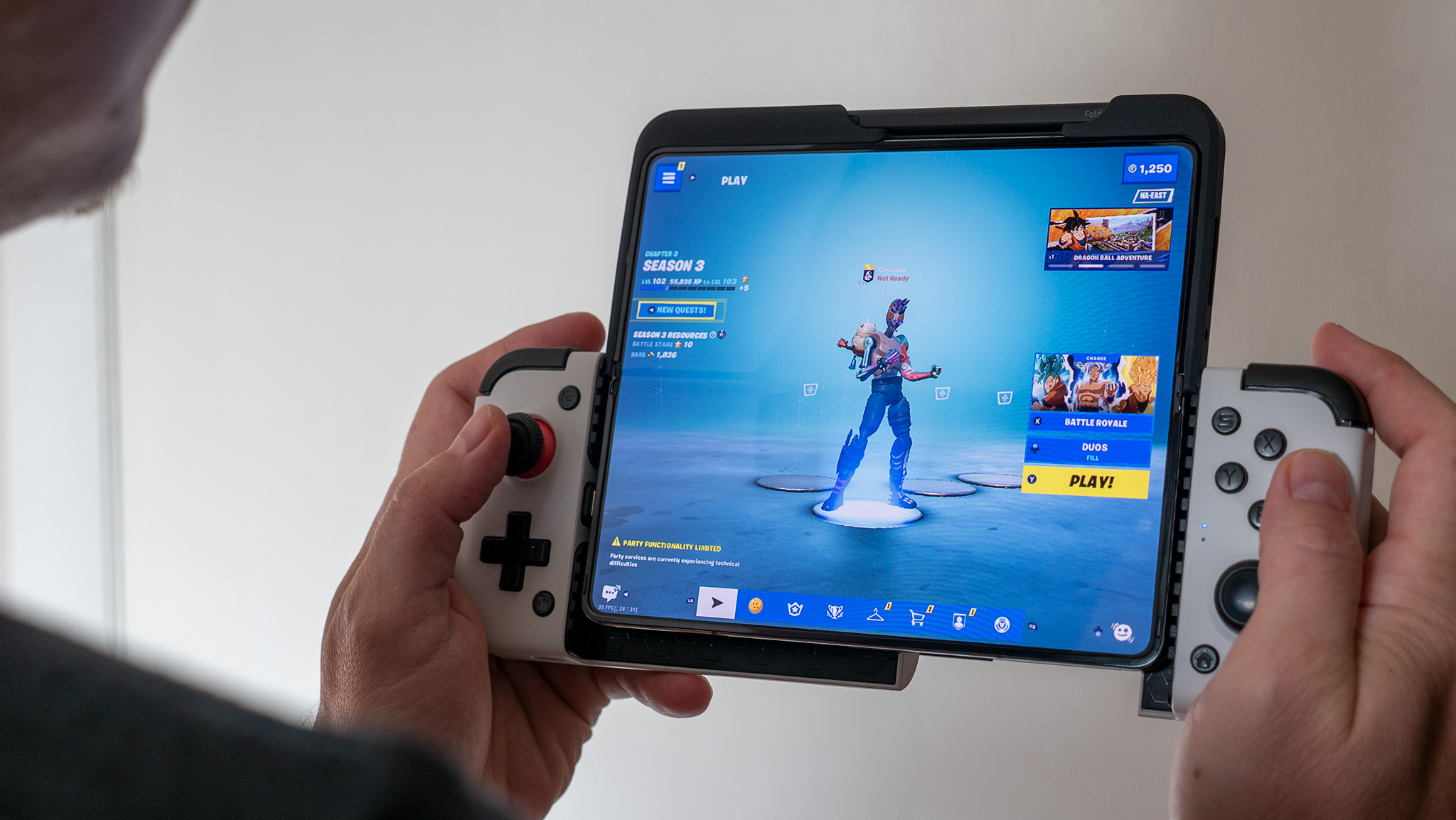
You might have made it this far and are still trying to figure out why you would want a dedicated gaming handheld as opposed to the phone in your pocket. That's a valid question, especially if you have a foldable phone that provides a larger screen than even the Steam Deck or ROG Ally.
However, I would argue that a dedicated device is better than one that serves multiple purposes. In the case of something like the Miyoo Mini Plus, it's small enough to put in your pocket and take out whenever you have a few minutes. While something like the Ayaneo Pocket AIR or AYN Odin 2 offers a more ergonomic "out of box" experience.
Backbone One (2nd Gen, USB-C): $99.99 $69.99 at Amazon
Over the past few years, the Backbone One has been one of the best mobile controllers, and it recently got a bit of a facelift. With Apple's move to USB-C with the iPhone 15, there are only two models to worry about, with either the Xbox or PlayStation version.
Backbone also claims that the 2nd Gen now "supports a wider range of phones," while also offering "swappable magnetic adapters." Plus, the D-pad and face buttons have been improved to provide "even more precise and responsive input."
Price check: $64.99 at Best Buy
But the real added benefit is that with a dedicated device, you don't have to worry about being interrupted by a barrage of notifications. Instead, you can just let your phone do "phone things" while enjoying any and all of your favorite games with a separate device.
Be an expert in 5 minutes
Get the latest news from Android Central, your trusted companion in the world of Android
Even still, there are a few great controllers that easily attach to whatever phone you own. For example, the Backbone One (2nd Gen) was just released, increasing compatibility with different phones, while also introducing an updated D-pad and face buttons. Meanwhile, the MOGA XP7-X Plus is a fantastic telescopic controller that connects to pretty much anything thanks to its Bluetooth connection.
PowerA MOGA XP7-X Plus Bluetooth Controller: $99.99 $57.25 at Amazon
It doesn't matter what device you own with the MOGA XP7-X Plus. That's all thanks to the built-in Bluetooth paired with the 2,000mAh battery, as you can just slot your phone in and start playing. Plus, there's an included stand, allowing you to use this controller with your tablet or computer.

Andrew Myrick is a Senior Editor at Android Central. He enjoys everything to do with technology, including tablets, smartphones, and everything in between. Perhaps his favorite past-time is collecting different headphones, even if they all end up in the same drawer.
